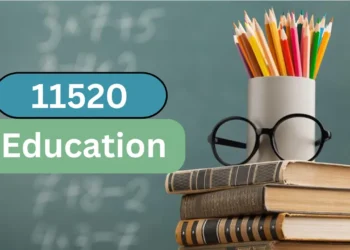It is 7:30 PM. My voice is raspy, my patience is wearing thin, and I have just finished reading the final page of a book I can recite in my sleep. I reach for the lamp to turn it off, signaling bedtime, but a small hand grabs my wrist. Then comes the command, equal parts plea and demand: “Read it again!”
Every parent knows this specific kind of exhaustion. You yearn for variety, for a plot twist, or just something that doesn’t involve a caterpillar eating through a week’s worth of groceries. But for the child, that repeated story isn’t boring. It is comforting, exciting, and necessary.
I used to try to negotiate. I would offer shiny new books with colorful covers, trying to bribe my way out of the repetition loop. It rarely worked. Over time, I realized I was fighting a battle against biology. The “again phase” isn’t just a quirky toddler habit; it is a massive engine for learning.
Recently, while looking for ways to keep my kids engaged without just zoning out, I found some interesting resources on bahrku.com. It got me thinking about how we manage our kids’ attention spans. Whether you are trying to turn screen time into learning time or sitting down with a paperback, repetition plays a massive role in how they process information.
Here is a look at what is actually happening in those little brains when we read the same story for the hundredth time, and why we should lean into it rather than resist it.
The Comfort of Knowing What Comes Next
Imagine you are dropped into a foreign country where you don’t speak the language, you don’t know the customs, and you have no idea what will happen five minutes from now. That is essentially the life of a toddler. Their world is full of surprises, loud noises, and rules they don’t quite understand yet.
A familiar book offers an escape from that chaos. When a child opens a book they know, they become the master of that universe. They know the dog will bark on page four. They know the bear loses his hat. They know everyone gets home safe for dinner.
Predictability reduces anxiety. I have noticed that my kids ask for their “comfort books” most often when they are tired, sick, or have had a rough day at preschool. It acts as a reset button.
The Brain on Certainty vs. Surprise
The adult brain craves novelty because we have already mastered the basics of our environment. The child’s brain craves patterns because they are still building their foundation.
| Feature | Adult Reaction to Repetition | Child Reaction to Repetition |
| Emotional Response | Boredom, irritation, desire to skip ahead. | Comfort, confidence, excitement. |
| Cognitive Load | Low; the brain goes on “autopilot.” | High; the brain focuses on details missed previously. |
| Prediction | “I know the ending, so there’s no point.” | “I know the ending, and being right feels good!” |
| Focus | Tunes out familiar information. | Deepens understanding of syntax and nuance. |
When a child successfully predicts the rhyme at the end of a sentence, their brain releases dopamine. It feels good to be right. That joy you see on their face isn’t just about the story; it is the satisfaction of competence.
The Vocabulary Sponge: How Repetition Builds Language
We often think that if we want to expand a child’s vocabulary, we need to expose them to as many different books as possible. While variety is good, depth is better for retention.
The first time I read a book to my child, they are mostly looking at the pictures. The words are just background noise. By the third time, they start to link the word “apple” to the red circle on the page. By the tenth time, they are picking up on the sentence structure.
Immersion creates ownership. A child needs to hear a word multiple times in the same context to truly understand how to use it. This is why “scrape” content or rephrased articles online fail to teach us anything new—they lack depth. Similarly, skimming through ten different books once is less effective than deep-diving into one book ten times.
The Tiers of Understanding
I like to view this process in stages. You can actually see the child move through these if you pay attention during story time.
- Rhythm and Tone: The child listens to the melody of your voice. They don’t understand the words yet, but they enjoy the sound.
- Mapping Labels: They realize the sound “cat” matches the whiskered animal picture.
- Predictive Phrasing: They anticipate the next word. This is usually when they shout out the end of the sentence before you read it.
- Concept Application: They use a word from the book in real life. If my son says, “That is an enormous truck,” I know he pulled “enormous” from his favorite dinosaur book.
If I stop reading the book after stage two, he never gets to stage four.
Analyzing the “Rereadable” Book
Not all books are created equal. I have bought books that seemed great in the store, only to have them tossed aside after one read. Then there are the battered, taped-up paperbacks that live on the nightstand.
What makes a book “sticky”? In my experience, the books that invite repetition usually share specific DNA. It isn’t just about pretty pictures; it is about the structure of the text.
Key Characteristics of Favorite Books
- Strong Rhyme Schemes: Rhymes make the text memorable. They act as mnemonics, helping children recall the story even if they can’t read.
- Cumulative Storytelling: This is where the story builds on itself (e.g., “The House That Jack Built”). It forces the child to recall the sequence of events.
- Interactive Elements: Books that ask the reader to find something, make a noise, or guess what happens next.
- Emotional Resonance: Stories that deal with separation and reunion (like The Runaway Bunny) are perennial favorites because they address a primal fear safely.
Here is a breakdown of what I look for when buying books, specifically aiming for longevity.
| Feature | Why It Works for Repetition | Example Concept |
| Refrain / Chorus | A repeated phrase allows non-readers to “read” along. | “Not by the hair of my chinny chin chin!” |
| Visual Subplots | Details in the art that aren’t in the text. | A mouse hiding on every page that the text never mentions. |
| Predictable Rhythm | A steady beat (meter) soothes the nervous system. | Dr. Seuss’s anapestic tetrameter. |
| High Contrast | Easier for younger eyes to track and process. | Black and white shapes or bold primary colors. |
From Passive Listening to Active Participation
One of the most magical shifts happens when the child stops just listening and starts “reading” to you. I put “reading” in quotes because, at first, it is mostly memorization.
Parents sometimes worry about this. I have had friends ask me, “Is he actually reading, or did he just memorize the book?” The answer is: It doesn’t matter. Memorization is a critical stepping stone to literacy.
When a child recites a book while turning the pages, they are practicing:
- Sequencing: Understanding that stories have a beginning, middle, and end.
- Book Handling: Knowing text goes left to right, top to bottom.
- Confidence: Seeing themselves as a “reader” before they can decode phonics.
Encouraging the Transition
I try to facilitate this shift without making it feel like a test. If I stop and say, “What does this word say?” it kills the vibe. Instead, I use the “cloze” technique.
I read, “Brown bear, brown bear, what do you…” and I pause. I wait for them to fill in “see.”
This keeps them engaged. It turns the book into a duet rather than a solo performance. Over time, I pause for longer sections. Eventually, they are reciting whole pages. This builds the oral language skills that are necessary for writing later on.
Managing Parent Fatigue: How to Stay Sane
Let’s be honest. Reading the same 12 pages about a truck stuck in the mud for three weeks straight is mentally draining. I have found myself zoning out, reading the words automatically while making a mental grocery list.
However, kids are smart. They know when you are phoning it in. If I skip a page to speed things up, I get caught immediately. “You missed the part with the bird!” they yell.
Here are a few strategies I use to keep myself interested, which in turn makes the experience better for them.
Strategies for the Bored Parent
- Change the Voices: I assign different accents or pitches to characters. It feels silly, but it keeps my brain engaged.
- Focus on the Art: I force myself to look for details in the illustrations I haven’t noticed before. “Look, there is a tiny bug on that leaf.”
- Ask “Why” Questions: Instead of just reading the text, I ask, “Why do you think the bear looks sad right now?” This prompts critical thinking and breaks the monotony.
- Connect to Real Life: “Remember when we saw a truck like that at the park?”
Do not view it as a chore. I try to reframe it. This isn’t just reading; it is bonding. In five years, they won’t want to sit in my lap and read this. This perspective usually gives me the patience to get through it one more time.
The “Safe Space” for Difficult Emotions
Books are often safe simulations for real-life problems. I realized this when my youngest became obsessed with a book about a lost toy. He wanted to read it every night.
He wasn’t just interested in the toy; he was processing the concept of loss and recovery. Reading the book allowed him to experience the fear of losing something and the relief of finding it, all while sitting safely in his bed.
Repetition allows children to “practice” emotions. They can dip their toes into fear, sadness, or anger through a character, knowing that the book always resolves the same way. It is emotional regulation training wheels.
Pros and Cons of Repetitive Reading
To summarize the impact, here is how the dynamic plays out for both sides.
| Perspective | Pros | Cons |
| For the Child | Mastery of language, emotional security, confidence boost, deep comprehension. | Can become resistant to trying new genres if not gently encouraged. |
| For the Parent | Bonding time, seeing the child learn, easy routine (no surprises). | immense boredom, frustration, feeling like you aren’t “teaching” enough. |
Frequently Asked Questions
Why does my child want to read the same book even when they know the ending?
Children prioritize safety and mastery over novelty. Knowing the ending eliminates the anxiety of the unknown. It makes them feel smart and in control of the narrative, which is a rare feeling for a small child in a big world.
Should I force my child to read new books if they only want the old ones?
No, do not force it. That turns reading into a chore. I usually suggest a “one old, one new” deal. We read the favorite book first, and then we try a new one. Often, simply leaving new books accessible in their play area creates natural curiosity without pressure.
Does memorizing a book count as “real” reading?
Absolutely. Memorization demonstrates that the child understands narrative structure, sentence flow, and sequencing. It is a foundational skill that precedes phonetic reading. Do not discourage it; celebrate it as a milestone.
When does the repetitive reading phase typically end?
It varies, but it usually peaks during the toddler and preschool years (ages 2-5). As children enter school and gain more control over their environment and better reading skills, their desire for novelty increases. However, many older children still return to favorites for comfort.
Conclusion
The next time your child hands you that tattered, dog-eared book and begs for “one more time,” try to suppress the sigh. I know it is hard. I know you can recite the words backward. But remember what is happening beneath the surface.
You aren’t just reading a story. You are building their vocabulary, soothing their anxiety, and teaching them that words have meaning. You are providing a consistent anchor in their rapidly changing world.
Embrace the repetition. Read it with gusto. Do the silly voices. Because one day, you will finish that book for the very last time, place it on the shelf, and they won’t ask for it again. Until then, enjoy the encore.









